Is VLC showing a black screen instead of the actual video on your PC? Many users have reported that whenever they try playing a video in VLC, it keeps showing a blank screen while the audio continues to play. Some users have reportedly experienced this issue when playing videos on fullscreen, while some said it happens otherwise, too.
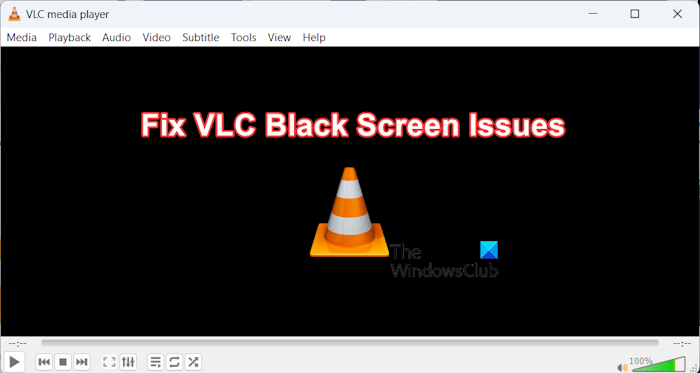
There can be various reasons behind this issue. In this post, we will explain the reasons that cause black screen problems on VLC and how you can fix the issues. So, check out below.
Fix VLC black screen issues on Windows PC
If you are getting a blank black screen while playing videos in VLC media player on Windows 11/10, you can use the below methods to fix the issue:
- Perform some preliminary checks.
- Disable Hardware Acceleration in VLC.
- Change the default video output mode.
- Check video codecs.
- Reset VLC preferences.
- Uninstall, then reinstall VLC.
1] Perform some preliminary checks
Before you proceed with advanced solutions, you can follow these basic suggestions to fix the issue:
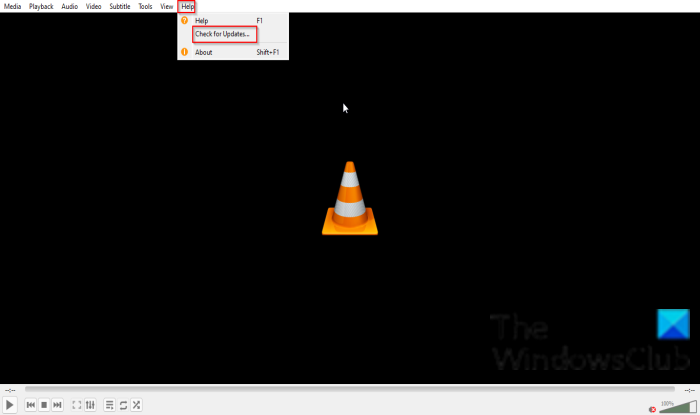
- Try closing and then reopening the VLC app to check if it plays videos fine or not.
- You can also reboot your PC to resolve any temporary issues.
- The next thing you can do is ensure that your graphics drivers are up-to-date.
- You can also try playing another video in VLC to see if the issue is fixed. If the problem occurs with one or a few specific videos, it could be the case that the video is corrupted. So, in that case, you can repair the video and then check if VLC has stopped showing a black screen.
- If you are using an outdated version of VLC, update it right away. Open VLC, go to the Help menu, select Check for updates.
2] Disable Hardware Acceleration in VLC
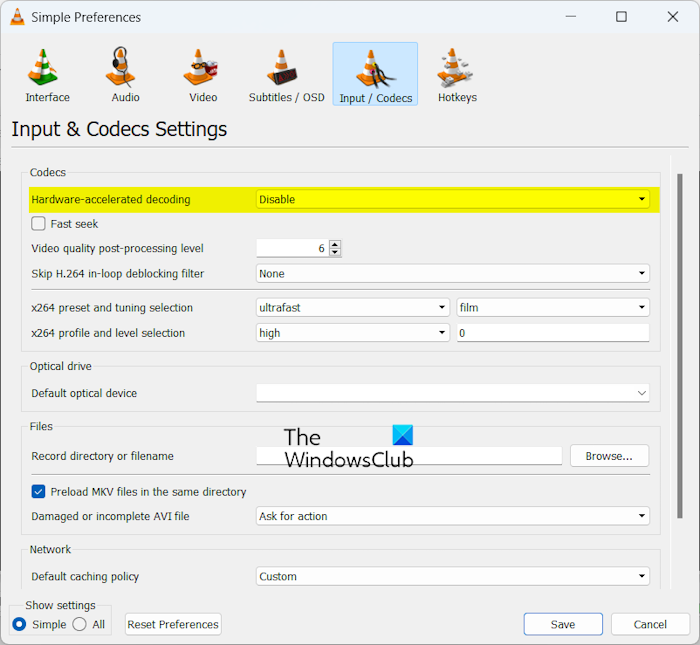
VLC’s hardware acceleration feature enables the media player app to utilize your computer’s GPU to offload some of the video decoding tasks from the CPU. While it is a handy feature, it can sometimes cause black screen issues on your PC. Hence, if the scenario is applicable, you can disable hardware acceleration in VLC and see if it helps Here’s how to do that:
- First, open VLC and click on the Tools menu.
- Now, select the Preferences option.
- After that, go to the Input / Codecs tab.
- Next, set the Hardware-acceleration decoding option to Disabled.
- Once done, press the Save button and restart the app to check if you can play your videos without any issues.
Fix: No sound or audio in VLC on Windows.
3] Change the default video output mode
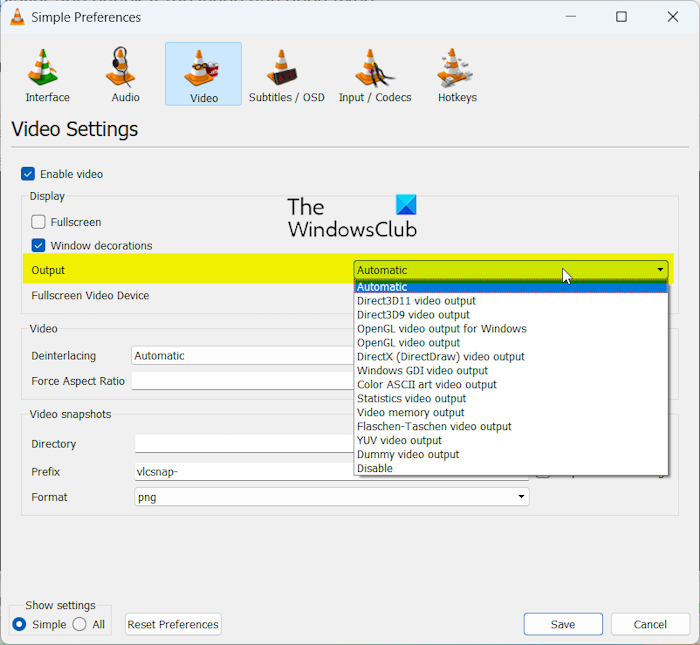
The default video output in VLC might not be able to a few types of videos. So, if the scenario applies, you can change the video output mode accordingly and check whether the issue is resolved. Here are the steps to do that:
- First, open VLC and click on the Tools > Preferences option.
- Now, move to the Video tab.
- Next, select the drop-down menu button present next to the Output option and choose an appropriate video mode. You can also set it to Automatic.
- After that, press the Save button and see if the issue is resolved.
You can experiment with the video output mode and see what works for you.
See: Fix Windows Media Player Video Flickering in Windows.
4] Check video codecs
This black screen issue in VLC could be very well facilitated due to codec compatibility issues. As new file types are introduced every then and while, it might be the case that your VLC app doesn’t have enough codecs to play certain types of video files. So, if the scenario is applicable, check the codecs used in the problematic video and then install the required video codec pack to fix the issue.
To find out the video codec, open the problematic video, go to the Tools menu, and select the Media Information option. You can also press CTRL+I to view media information. Now, go to the Codecs tab and check the video codec. If it is a newer codec, you can install the required codecs and then see if the issue is resolved.
5] Reset VLC preferences
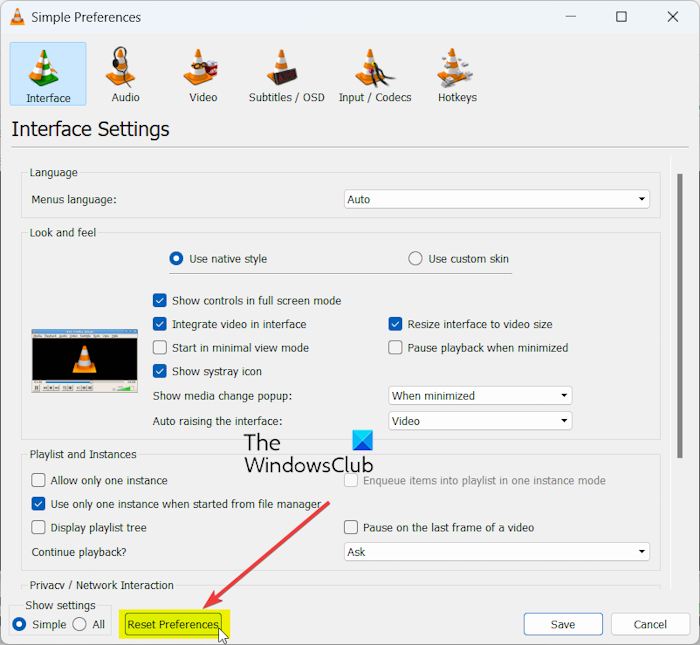
It could also be a corrupted preference or customization causing a black screen while watching videos in VLC. So, if the scenario is applicable, you can rest the preferences to their original defaults in VLC. Here are the steps to do so:
- First, click on the Tools menu > Preferences option in VLC.
- Next, from the bottom of the window, press the Reset Preferences button.
- Now, press the OK button in the confirmation prompt.
- Finally, relaunch VLC and check if the problem is fixed.
See: VLC washed out colors & color distortion problem.
6] Uninstall, then reinstall VLC
If you are still getting a black screen while playing videos in VLC, consider reinstaling the app. Such issues are likely to trigger if the installation of the app is corrupted or certain necessary files are missing. Hence, uninstalling VLC and then installing it back on your system to fix the issue.
Here’s how:
First, close the VLC completely and press the Win+I hotkey to launch the Settings app.
After that, go to the Apps tab and click on the Installed apps section.
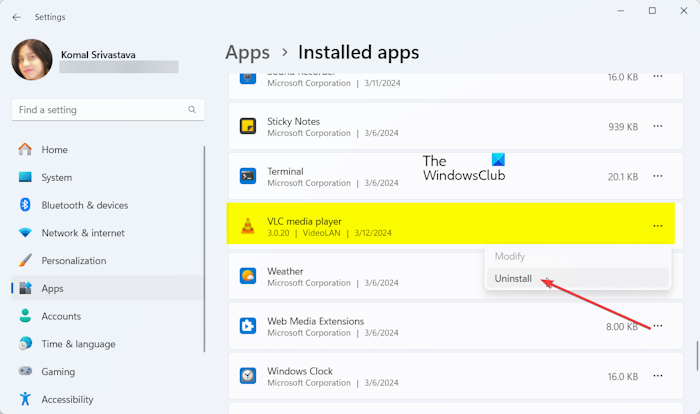
Now, scroll down to the VLC app, tap on the three-dot menu button, and click on the Uninstall option.
Next, follow the prompted instructions to remove the app.
Once the app is removed, delete all the residual files associated with VLC from its installation folder, %AppData%, and other locations.
Finally, reboot your computer and get the latest version of VLC from its official website. Install the media player on your PC and start watching videos without black screen issues.
Read: VLC media player keeps lagging/stuttering/skipping on Windows.
I hope you can watch videos on VLC without getting a blank black screen. If not, we suggest trying an alternative media player app to enjoy your videos seamlessly.
What to do when VLC is not working properly Windows 10?
If VLC is not working correctly on your Windows PC, it might be that the app version you are using is out-of-date. Hence, to avoid performance issues, make sure you are using the latest version of VLC. Besides that, ensure that you have installed the VLC app from its official website or Microsoft Store. You can also set up the correct settings, disable hardware acceleration, or reinstall the app to fix the issue.
Why does my Windows Media Player screen go black?
Black screen issues while playing video on Windows can result from faulty or outdated graphics drivers. Other factors responsible for this include unsupported hardware, outdated Windows, etc. So, if you are facing this issue, update your graphics driver, install the required video extension pack, and update Windows to the latest build to fix it.
Read next: Fix common VLC Errors, Problems, and Issues on Windows PC.